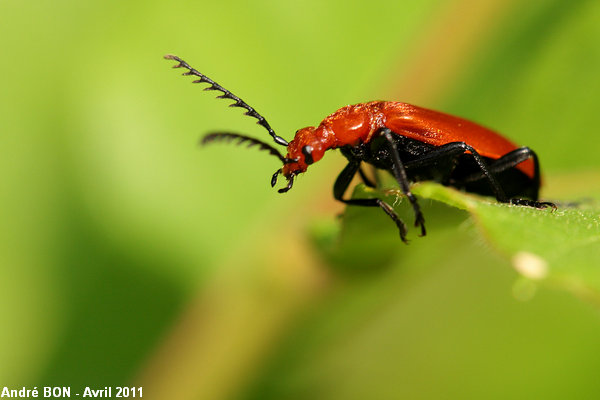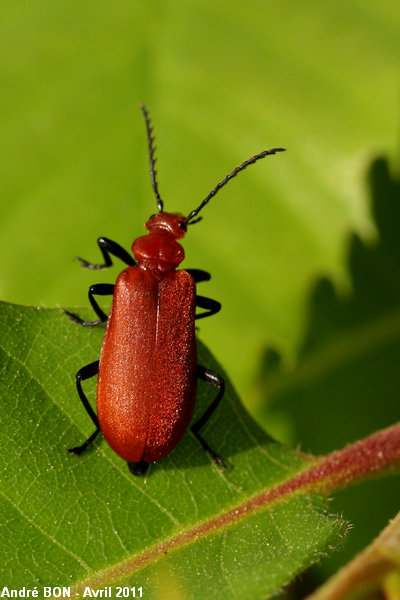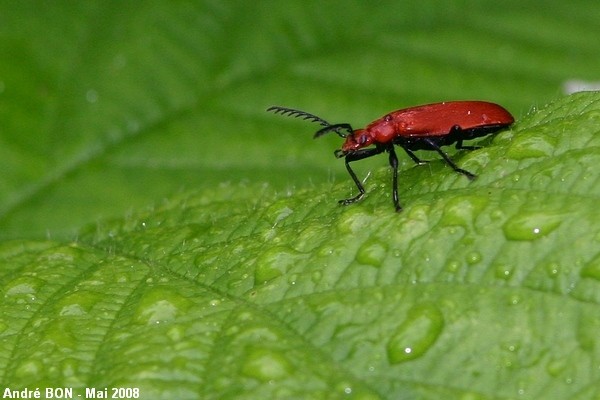


| Red-headed Cardinal Beetle (Pyrochroa serraticornis (Scopoli, 1763)) |



|
|
Scientific name: Pyrochroa serraticornis (Scopoli, 1763) Common name: Red-headed Cardinal Beetle French name: Cardinal à tête rouge Order: Coleoptera Family: Pyrochroidae Wingspan : 12-15 mm. Biotope: Woodland edges especially with flowers. Geographic area: All Europe except extreme north. Observation period : May to July. |
The Red-headed Cardinal Beetle is a coleoptera with bright red elytra, thorax and head. The legs and the antennae are black. Males have comb-like antennae, females' antennae are rather lightly serrated. The Red-headed Cardinal Beetle feeds on nectar, pollen or sap. The eggs are laid in the bark of rotten wood. The lengthy and flat larvae feed on insects and other larvae captured between bark and wood. They will pupate after two or three years. The Black-headed Cardinal Beetle (Pyrochroa coccinea), very similar species, has a black head and is slightly larger. |
| [To know more about the Red-headed Cardinal Beetle] [Next picture] [Top] |

|
I am still waiting to observe the Cardinal Beetle (Pyrochroa coccinea) which is told to be very common. I am only used to observing its red-headed cousin (Pyrochroa serraticornis). I have been a little annoyed by the wind to finely adjust the focus distance. I have kept this picture though the focus is a little backwards. |
| [To know more about the Red-headed Cardinal Beetle] [Next picture] [Previous picture] [Top] |

|
Here is a back side view to admire the beautiful red colour of the elytra. |
| [To know more about the Red-headed Cardinal Beetle] [Previous picture] [Top] |

|
The comb-like antennae indicate that this one is a male. |